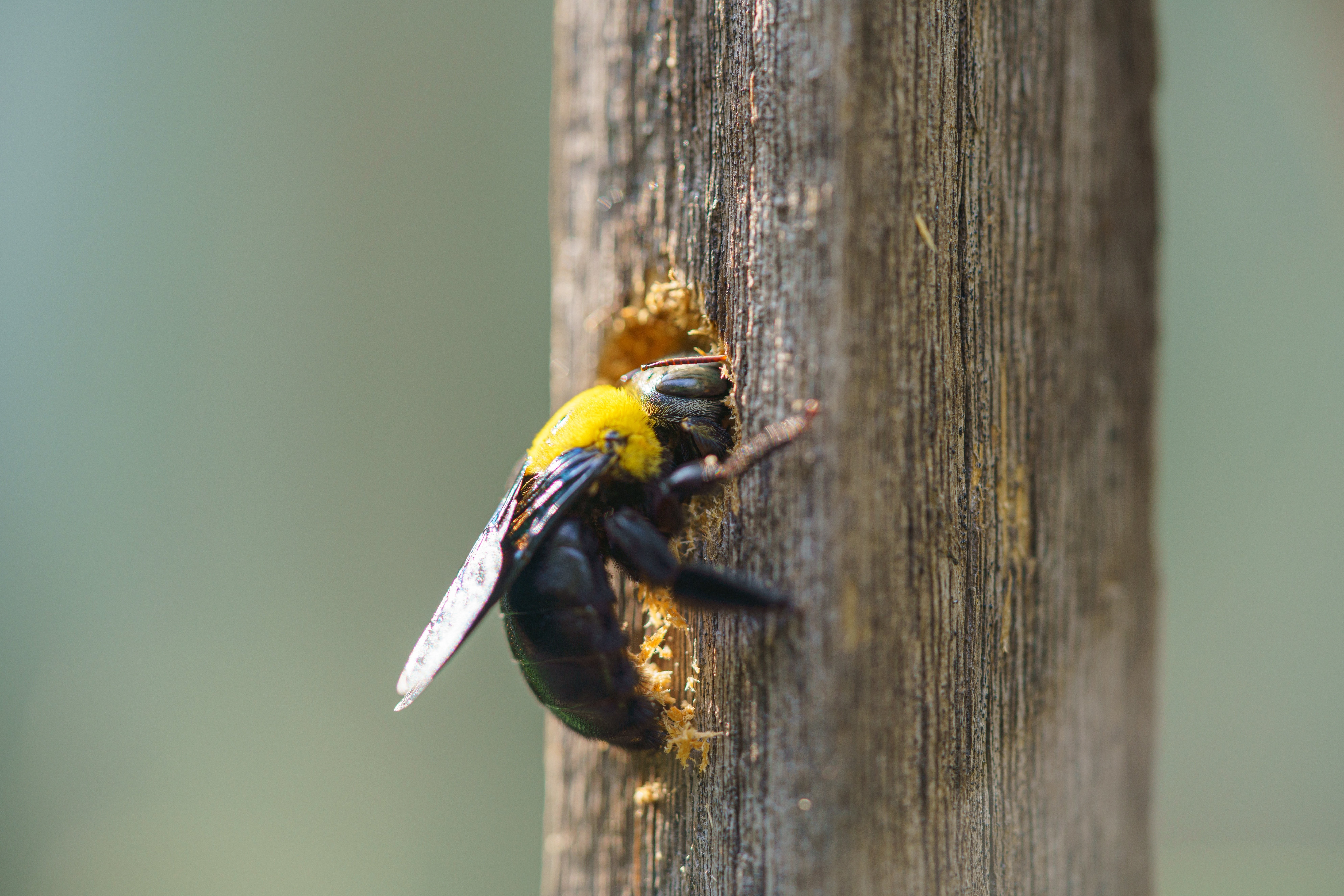Carpenter Bees Bugging You? Here’s What You Need to Know!

Every year, wood-loving pests wreak havoc on homes and businesses across the Mid-Atlantic. Some chew through wood, while others drill into it to make their nests—causing major headaches and expensive repairs. Among the biggest troublemakers in New Jersey, Pennsylvania, Delaware, and Maryland? Termites, carpenter ants, old house borers, and, of course, carpenter bees.
Carpenter bees (Xylocopa virginica) are often mistaken for bumble bees because they look similar. But unlike bumble bees, these guys don’t live in hives. Instead, they burrow into wood to make their homes. If you’ve spotted them buzzing around your property, don’t wait—Viking Pest Control can take care of the problem fast and effectively.
What Are Carpenter Bees Up To?
It’s easy to confuse carpenter bees with bumble bees, especially when they’re hovering near your wooden decks, fences, or eaves. But here’s the thing—carpenter bees don’t eat wood. Instead, they tunnel into it to create cozy little nurseries for their young.
They prefer untreated or unpainted wood, which means they often target decks, fences, railings, eaves, shingles, and even wooden patio furniture. Their nests start with a neat, round hole (about half an inch wide) before they dig tunnels inside, sometimes expanding old ones year after year.
During winter, these bees hunker down inside their tunnels until spring arrives and it’s time to mate. The females lay eggs and leave a stash of pollen and nectar for their babies to munch on. By late summer, new adult carpenter bees emerge, ready to start the cycle all over again.
Will Carpenter Bees Sting?
If you’ve ever had a carpenter bee buzz a little too close for comfort, you’re not alone. Males can be pretty bold, hovering in your face as if they own the place. But here’s the kicker—male carpenter bees can’t sting. Only females have stingers, and they usually won’t use them unless they feel truly threatened.
The sting itself is painful but generally mild unless you have an allergy. While they’re not the most dangerous pests, their wood-boring habits can lead to structural damage over time—making them more of a nuisance than anything.
How to Keep Carpenter Bees Away
Want to stop carpenter bees before they turn your deck into a drilling site? Here are some simple ways to keep them from moving in:
- Seal up cracks and crevices in wooden surfaces with caulk or another sealant.
- Paint or stain untreated wood—carpenter bees prefer bare wood!
- Clear away unnecessary wood debris like fallen branches or logs.
While these DIY tricks can help, they might not be enough if carpenter bees have already settled in. That’s when it’s time to call in the pros.
The Best Way to Get Rid of Carpenter Bees
Seeing carpenter bees buzzing around your home or business? The fastest, most effective way to get rid of them is with professional pest control. At Viking Pest Control, our expert team knows exactly how to handle carpenter bees, using safe, state-of-the-art methods to protect your property.
With years of experience dealing with carpenter bees and other stinging insects, Viking Pest Control offers long-lasting solutions to keep your home or business bee-free. We use advanced equipment and eco-friendly treatments to get the job done right.
If carpenter bees are causing trouble in New Jersey, Pennsylvania, Delaware, or Maryland, Viking Pest Control has your back. Give us a call today, and let’s take care of the problem for you!











